As you know, there are more than 200 Google ranking factors that can affect your Joomla site’s ranking.
This is a tremendous amount of knowledge to understand if you want to SEO optimize your Joomla site properly.
However, only 20% of these factors that contribute the most to your ranking are the ones you should focus on. And it is the reason why we bring you this guide – the perfect place to start if you don’t know where to start or what factor your website is missing for better ranking.
With this latest ultimate Joomla SEO checklist, your site can be able to dominate top #1 in any search engine. Let’s check it out.
Configure the Joomla SEO settings
Before we dive into any complex strategies or masterminds, let’s take a few minutes to optimize Joomla for SEO.
Although our blog may take you a lot of time to read, it is essential to get the best result later for your website. Hence, don’t miss any single step.
Enable Search Engine Friendly URLs (SEF URL)
First of all, if your website’s URL looks like https://ltheme.com/index.php?option=com_view=item&id=124:joomlaseo, it is very difficult for search engines to read.
To ensure your URLs are optimized for search engines, it is important to enable Search Engine Friendly URLs in your Global Settings.
Optimizing Search Engine Friendly URLs (SEF URLs) is a perfect way to improve your Joomla site’s SEO. They are easier to read for both humans and search engines, and they can help improve your site’s ranking in search results.
To do that, you need to go to System > Global Configuration from your Joomla dashboard. Then navigate to the SEO settings section and enable the “Search Engine Friendly URLs” option as the screenshot below.
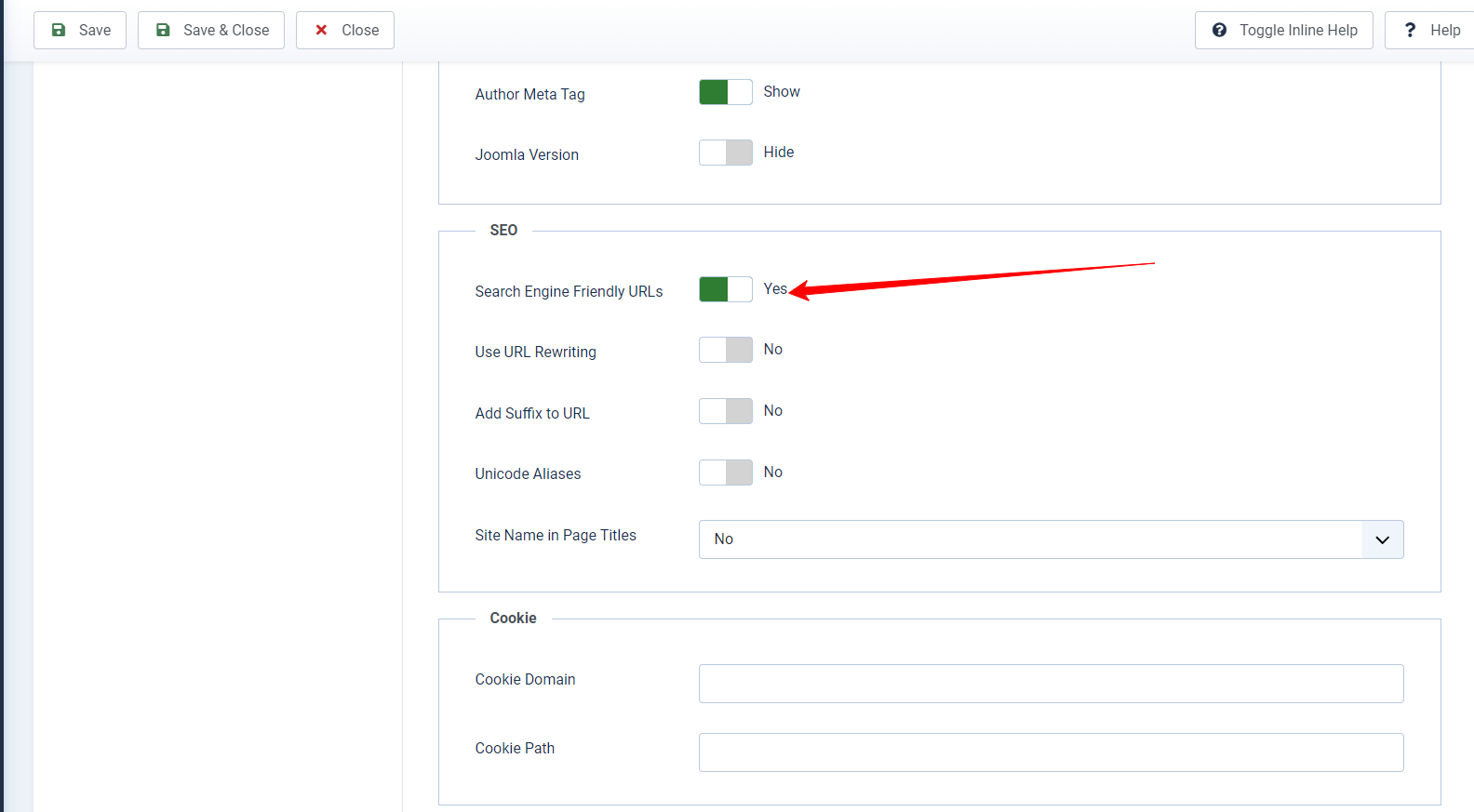
Once SEF URLs are enabled, you will need to create aliases for your pages. An alias is a short, descriptive name that will be used for your page’s URL. You can create an alias for each page by going to the page’s edit screen and entering the alias in the Alias field.
When you create an alias, you should use keywords that are relevant to the content of your page. You should also avoid using special characters or spaces in your alias. It must be more comfortable to read. For example:
https://ltheme.com/joomla-seo/index.php
In order to get a detailed guide, you can refer to our blog- How to Enable Search Engine Friendly (SEF) URLs in Joomla 4.
Remove index.php by using URL Rewriting
In addition, you need to remove the index.php from the end of your URL because the index.php is not necessary for search engines to understand your URLs.
To do that, you only enable the box next to the “Use URL Rewriting” option in your Global configuration settings.
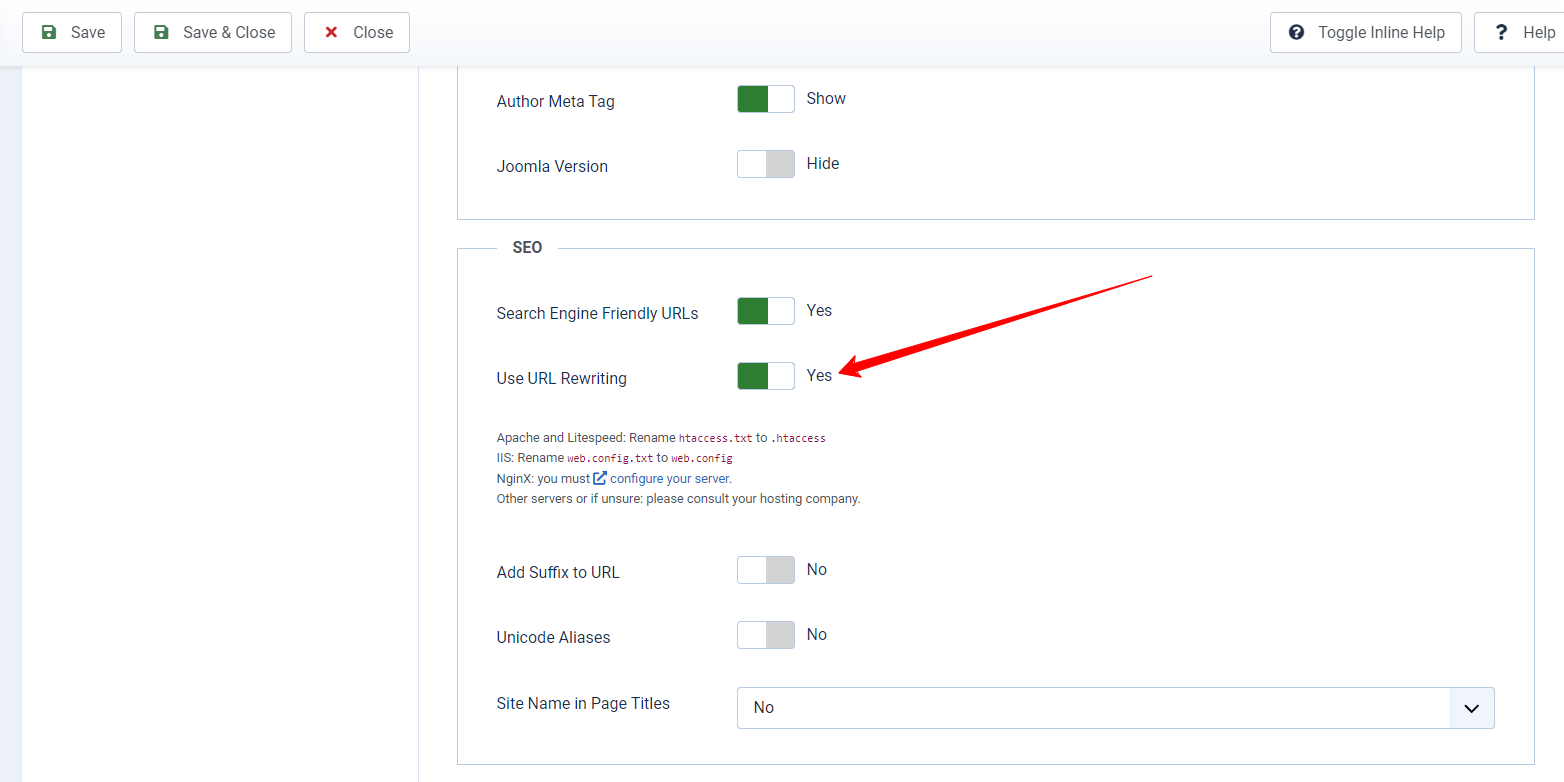
Once URL rewriting is enabled, you need to create a .htaccess file in the root directory of your Joomla site. You can do this by right-clicking in the root directory and selecting New > Text Document. Once the file is created, rename it to .htaccess in your Joomla data folder.
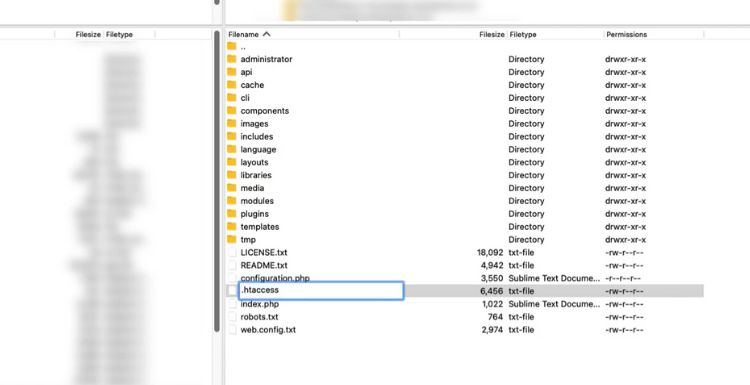
For more details, you can read our step-by-step blog to learn how to Remove index.php from URLs in Joomla 4.
Be sure to keep tabs on your page to make sure you don’t get any pesky 404 errors!
In case you are not utilizing Apache Servers, then let’s read the following guidelines.
Remove ID in URL
If you’re a Joomla user, you actually know that the platform automatically adds a number to your URL as a counting mechanism. Unfortunately, this isn’t great for SEO, and we agree – it’s time to get rid of it! So, if you’ve got one of these pesky numbers in your URL, it’s time to make a change.
To do that, you can track the following steps:
- Step 1: Go to System > Global Configuration > Articles then choose the “Options” button
- Step 2: Click the “Integration” tab.
- Step 4: Set the “Remove IDs from URLs” option to “Yes“.
Check back and see the result.
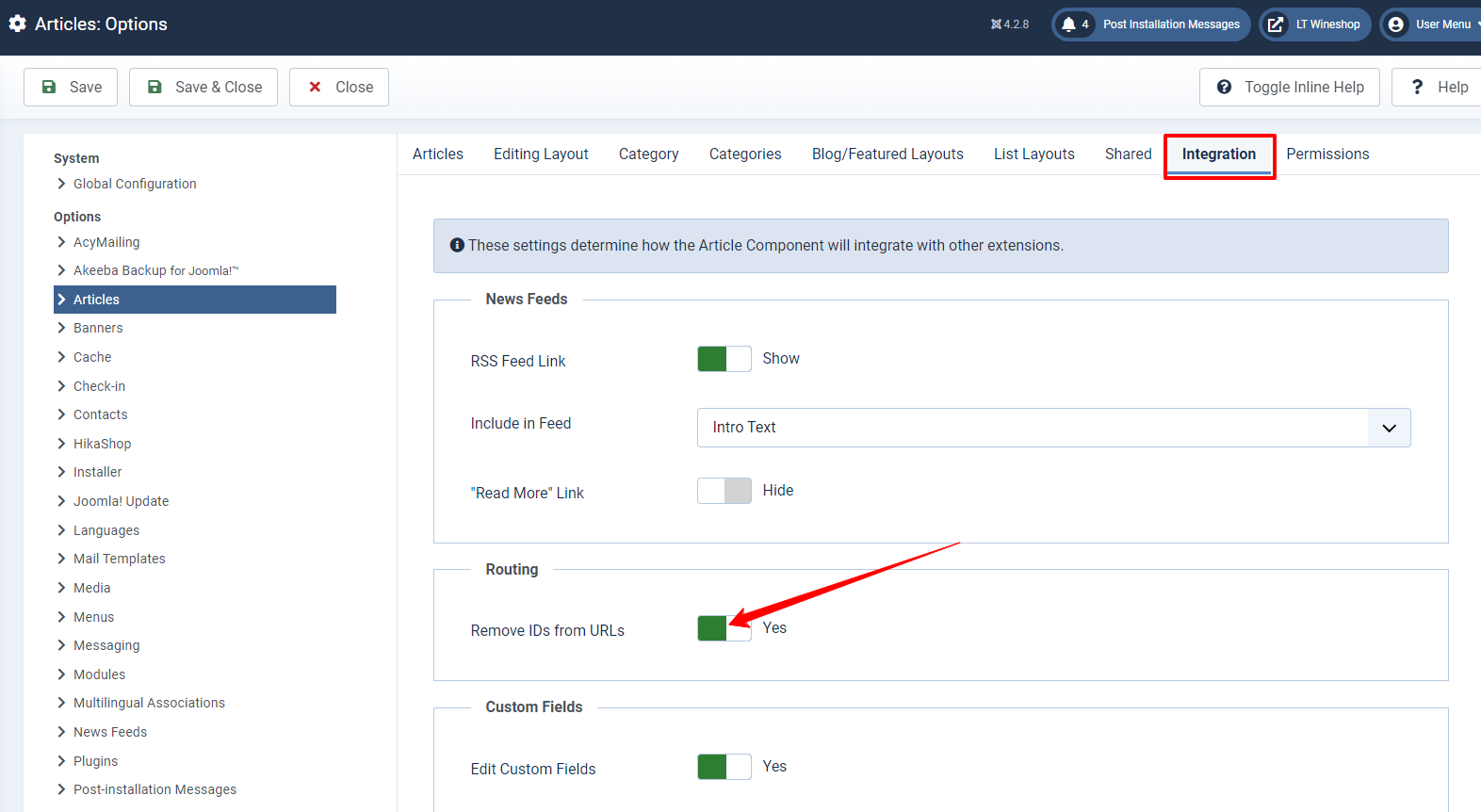
Similarly, you can also configure the same settings towards other pages like News Feeds and Contacts.
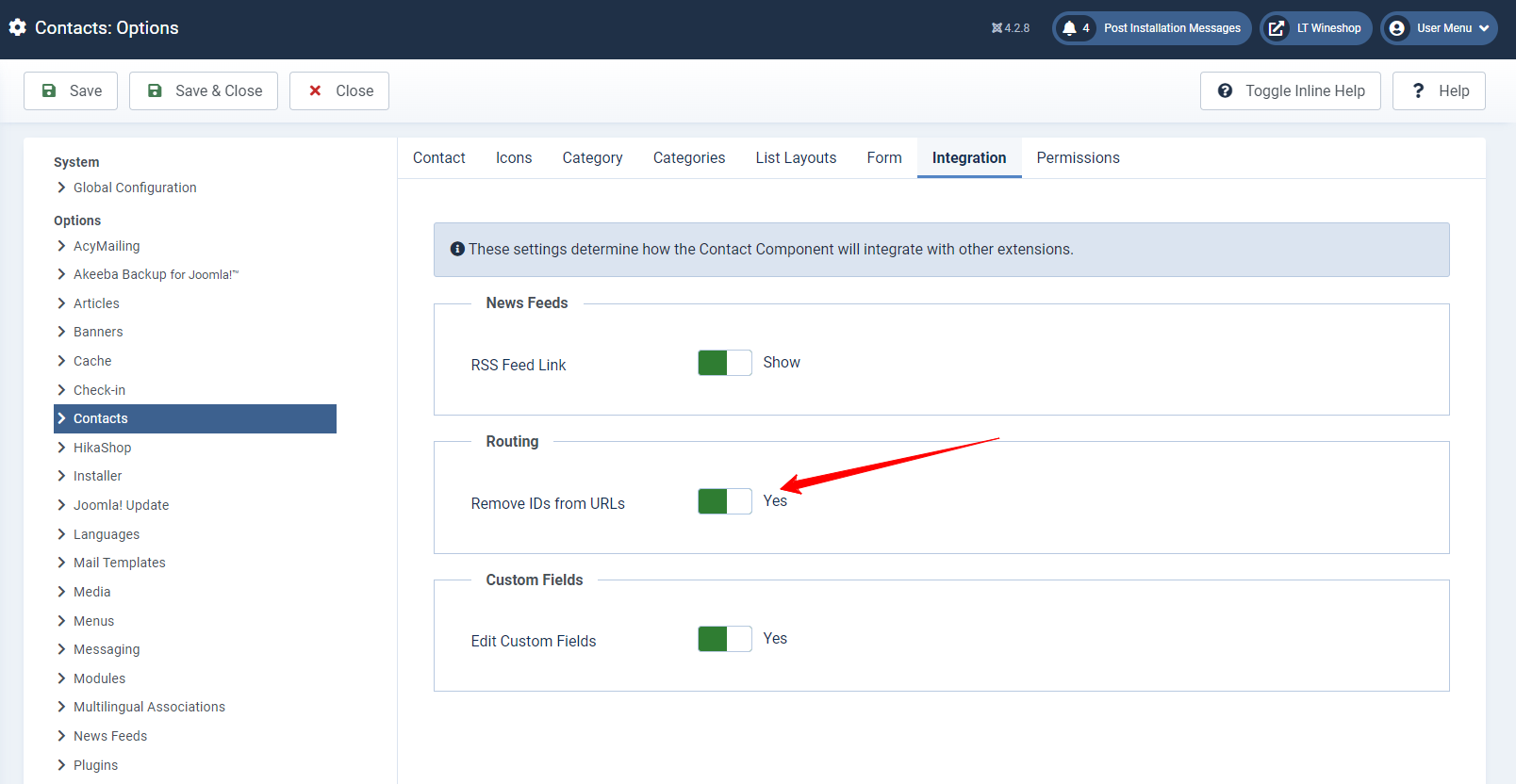
Enable Gzip Compression in Joomla
Using Gzip compression is regarded as a great way to significantly reduce the size of the files, which can lead to faster loading times for your Joomla site. In fact, it’s like zipping up your file before sending it off to the user – just similar to a zip application! Easy peasy.
To enable Gzip compression in Joomla, you need to go to the Global Configuration and find the Server tab. Under Server Settings, you will see the Gzip Page Compression option.
This option should be enabled by default, but if it is not, you can enable it by checking the box next to it.
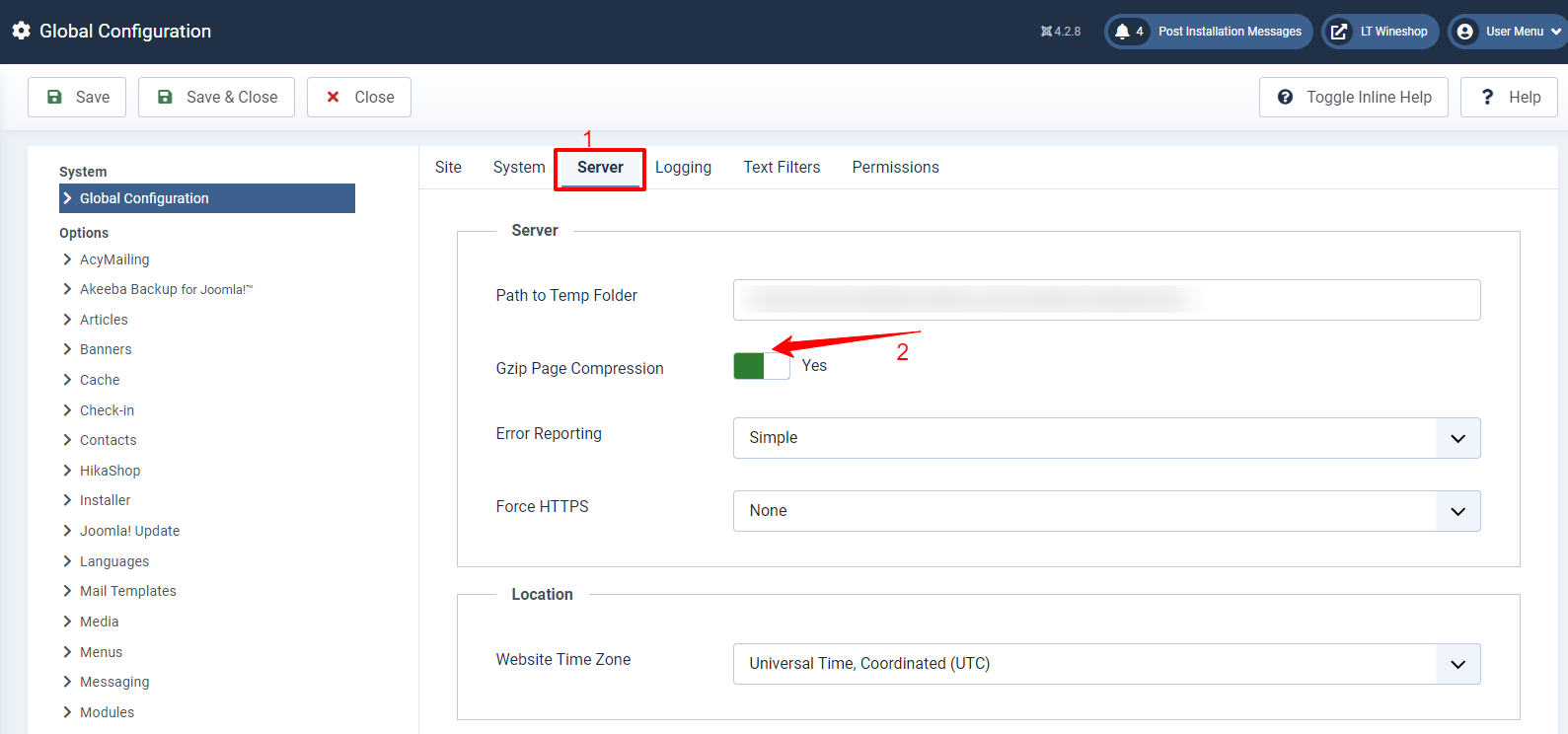
Once Gzip compression is enabled, you should see a noticeable improvement in your Joomla site’s loading speed. You can check your site Gzip Compression with some online apps such as
You can check your site GZip Compression with many online applications such as this one.
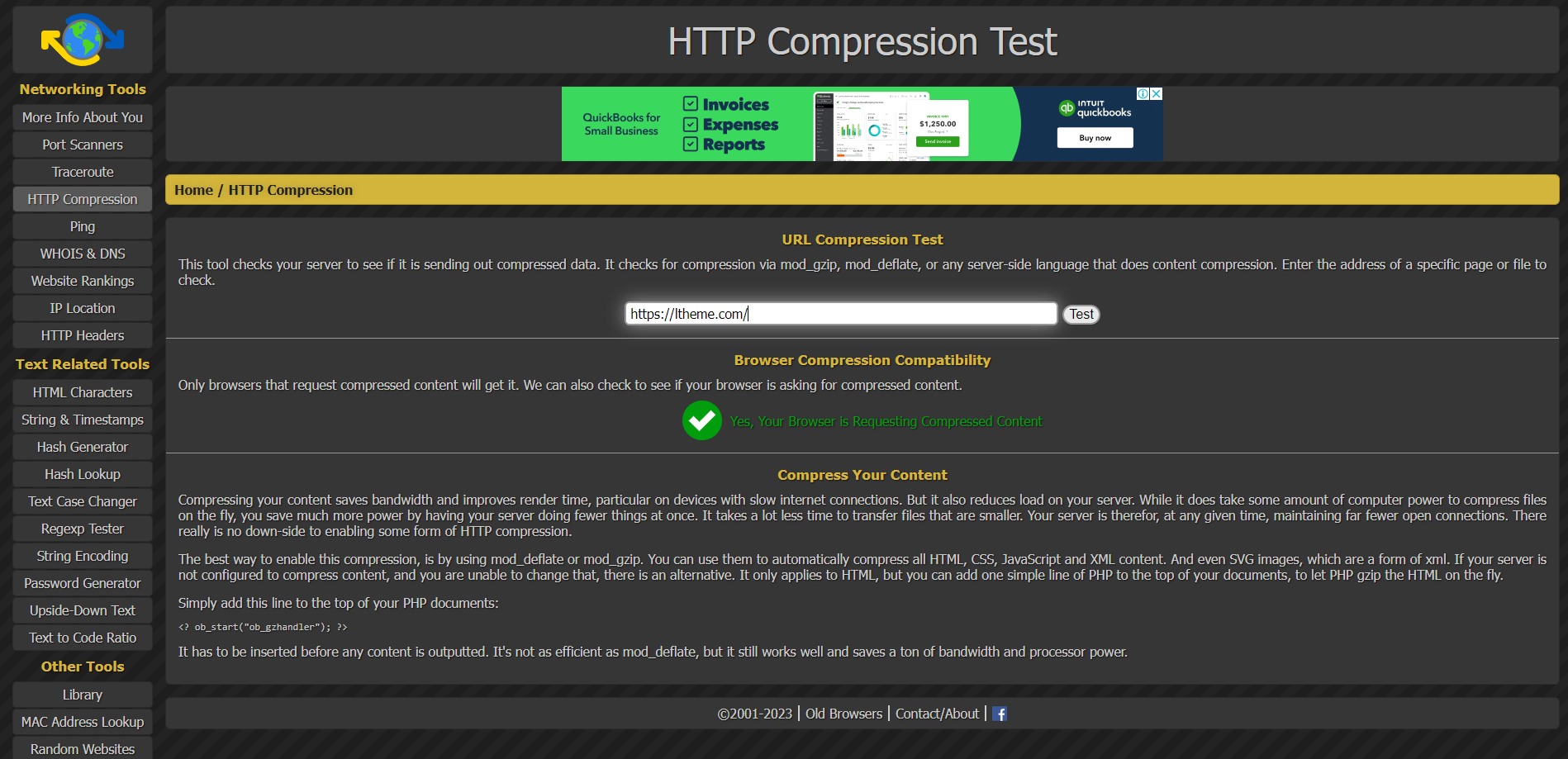
Other options on Joomla SEO settings
Besides that, there are some other things in Joomla SEO basic settings that you could pay attention to.
- Add Suffix to URL: not recommended because it will make your URL longer.
- Unicode Alias: If your article targets a non-Latin speaking reader like Chinese, or Japanese or has non-Latin characters, you should enable this setting. This will make the target readers easy to read your URL.
- Site name In Page Title: It’s a good way to spread your brand name via a search result, however, if your titles are too long, they can’t be displayed.
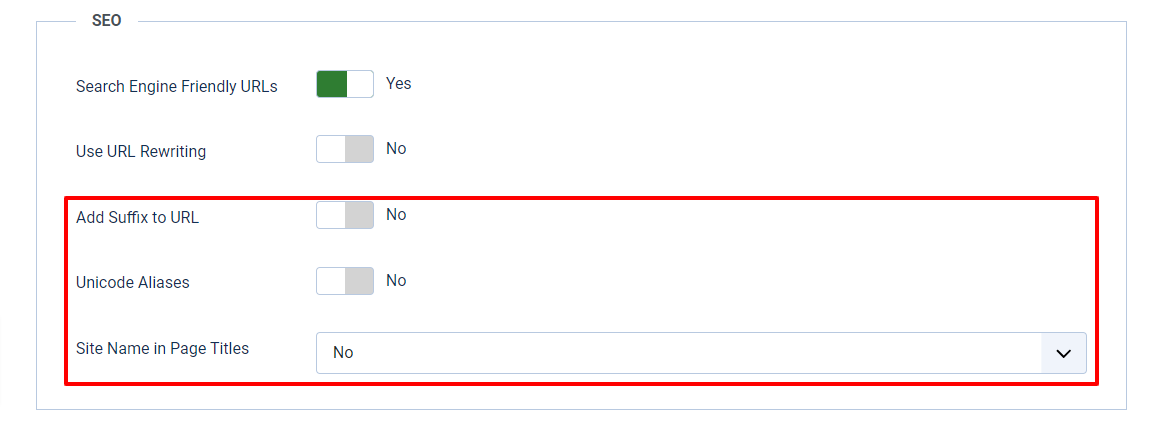
List of recommended Joomla SEO extensions
When it comes to SEO, Joomla has some great tools to choose from. But which ones are worth your money? To make it easier for you, we’ve compiled a list of the top recommended Joomla SEO tools from the Joomla community. Check them out and see which ones are right for you!
EFSEO: This is an excellent choice if you want to manage all your metadata conveniently.
Sh404sef: It is the most complete SEO tool in Joomla, it can be seen as the Joomla version of Yoast SEO. Especially, it is frequently updated to date with the latest Google changes.
SEO-generator: This extension is mainly focused on metadata configuration. In addition, it is straightforward to use.
In addition, you can read our review on the list of top 11 Joomla SEO and Metadata extensions to get more useful tools.
Prepare your site for measurement
If you want to track your site constantly to see the overall health of your site through various metrics (session, bounce rate, time on site, etc.), then using Google Analytics and Search Console is a perfect choice.
Google Search Console is all about the metrics – click-through rate, clicks, impressions, position, queries, links, mobile usability, and index coverage. Meanwhile, Google Analytics is all about giving you the data you need to make decisions – conversions, events, views, users, average engagement time, bounce rate, revenue, and audience demographics. It’s the perfect combo for giving you the insights you need to succeed!
For more details, let’s read our blog on how to quickly Add Google Analytics to Cassiopeia Joomla 4.
Keyword Research
Once you’ve finished setting up all the essential Joomla Basic SEO settings and adding Google Analytics to your website, it’s time to create a comprehensive SEO plan. Keyword research is an important aspect of this plan – it’ll help you figure out which topics to focus on and which to leave behind. With the right research, you can ensure that you’re making the most of your resources.
In this section, we are going to summarize for you the key parts of keyword research. Let’s dive into them.
Research and find a topic that relates the most to your business
Before you get started with any keyword research tools, take a few moments to get to know your business and your customers better. You need to answer the following questions. What topics are your customers discussing? What are they searching for? These answers to these questions will help you gain a better understanding of your customers, and then you can develop your strategies effectively.
For instance, if you offer spa and massage services, your customers may be looking for solutions to back pain or ways to relieve stress before they think of spa and massage. Focusing on these topics in addition to spa and massage can make it easier to come up with keyword ideas.
By doing this, it will be easier to come up with keyword ideas.
Do not rely solely on any single keyword research tool
Nowadays, keyword research tools are pretty accurate, but there’s more to the story. Did you know that around 15% of daily search queries have never been searched before? To get a really comprehensive keyword list, you should use a combination of methods and tools, like asking your customers, reading forums, and coming up with your own ideas. With this approach, you’ll have all the data you need to succeed.
So, you should not completely depend on research tools, you can use your own knowledge of your business and your target audience to make sure that the keywords you choose are relevant.
Some of the most effective and free keyword tools you should consider:
Moreover, you can take advantage of the Google Suggest system to to get more keyword ideas.
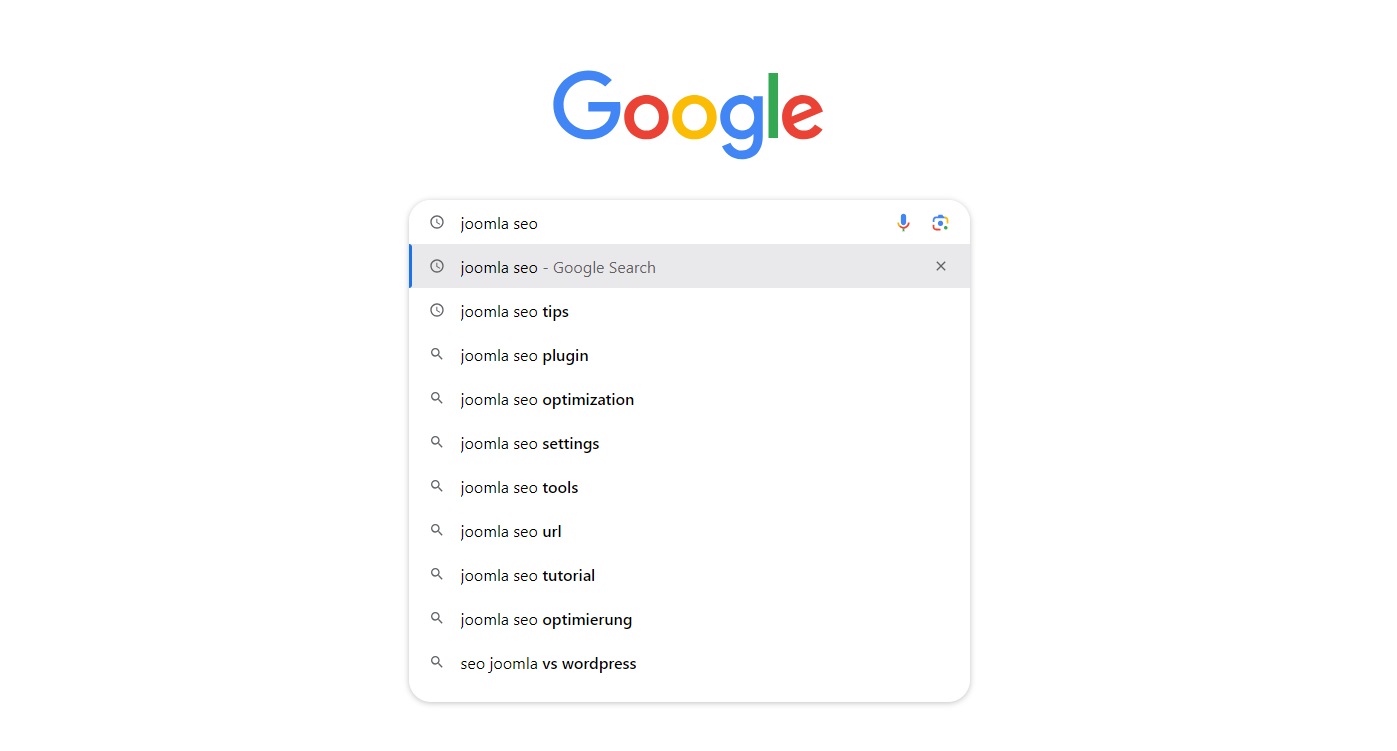
Besides that, there is a wide range of high-quality premium research tools such as: Ahrefs, Semrush, Moz.
Pay more attention to long-tail keyword
Although long-tail keywords may have low search volume, they are more targeted than short-tail keywords. Since users who are searching for long-tail keywords are typically closer to the point of purchase than people who are searching for short-tail keywords.
Also, you should use long-tail keywords that are less competitive than short-tail keywords, which means it is easier for your keywords to rank in search engine result pages. On the other hand, short queries with one or two words can get up to a thousand searches a month, but they come with a range of intentions, usually related to gathering information.
Be sure to also research LSI keyword
Latent Semantic Indexing (LSI) keywords are like having a secret weapon for SEO. They’re words or phrases related to your main keyword that help search engines understand the meaning of your content and how it relates to other content on the web. This can be a game-changer for your rankings, so it’s worth taking the time to find the best LSI keywords for your content.
For example: if your business specializes in providing fashion products, and your main keyword is “fashion”, then your LSI keywords could be: “accessories”, “shoes”, “clothes”, “dress”, “t-shirt”, etc. This will help you enhance the relevance of your content to the search queries that people are searching. Moreover, search engines also understand more about the context of your content and how it relates to other content on your website.
You can research LSI keywords by using some keyword tools as we mentioned above. Alternatively, you can utilize Google search to find LSI keywords. Just simply type your main keyword and look at the “Related searches” at the bottom of the search result page.
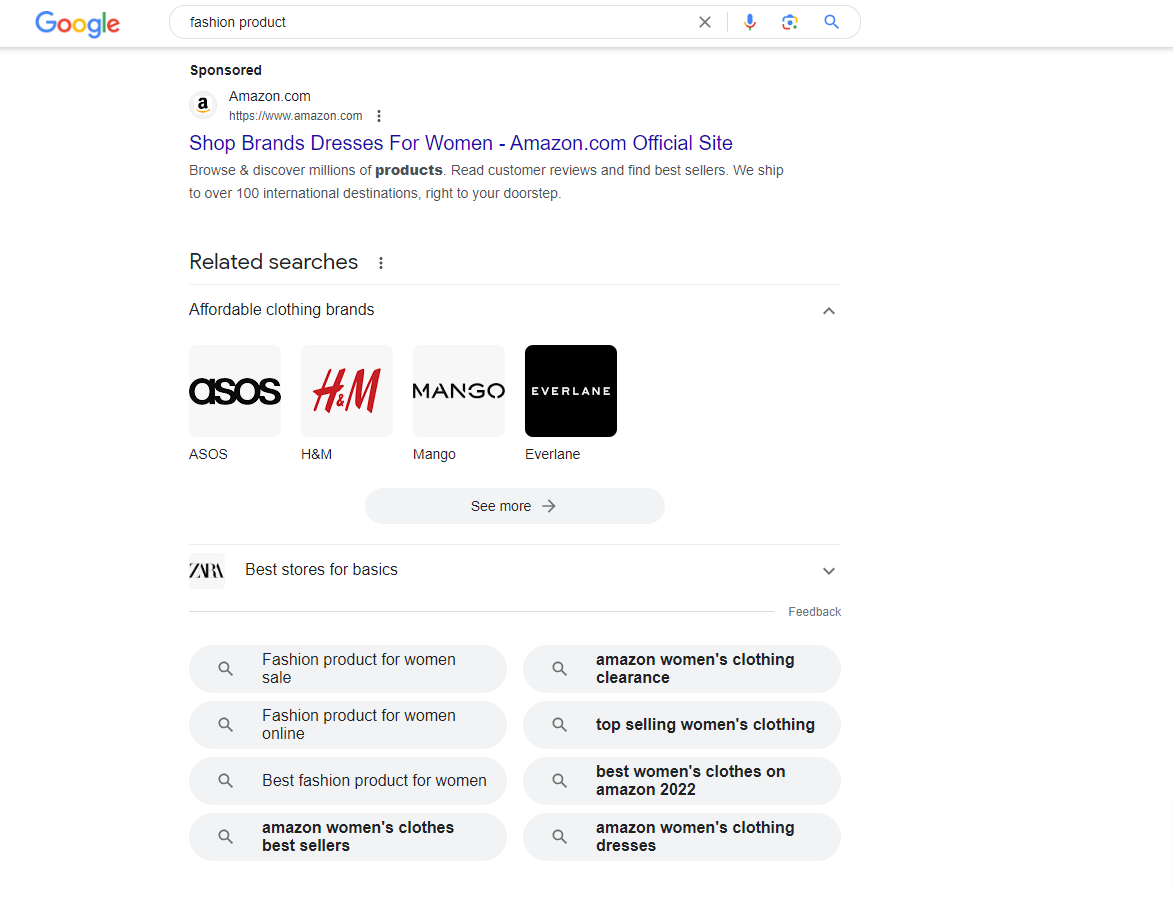
Some best ways to come up with article ideas
Once you’ve done your keyword research, you can start to get an idea of what topics and articles you’ll want to create. But to make sure you and your customer are on the same page, it’s important to pay attention to the search intent behind any query. Doing this will ensure your content is crafted with the right casual tone.
It usually comes in 4 different categories for search intent including:
- Information: When they would like to know more about something.
- Navigation: Once they want to search for a specific website. We often type Youtube on Google is one common example of this case.
- Transaction: When they want to make a purchase of something.
- Commercial intent: when they search several aspects of the products such as price, size, brand, etc. to decide what they will buy in the future.
If you want to uncover the true meaning behind a query, let’s do it by yourself by taking a look at the top 10 search results on Google. These results will give you an accurate representation of what searchers are typically looking for when they type in that particular query.
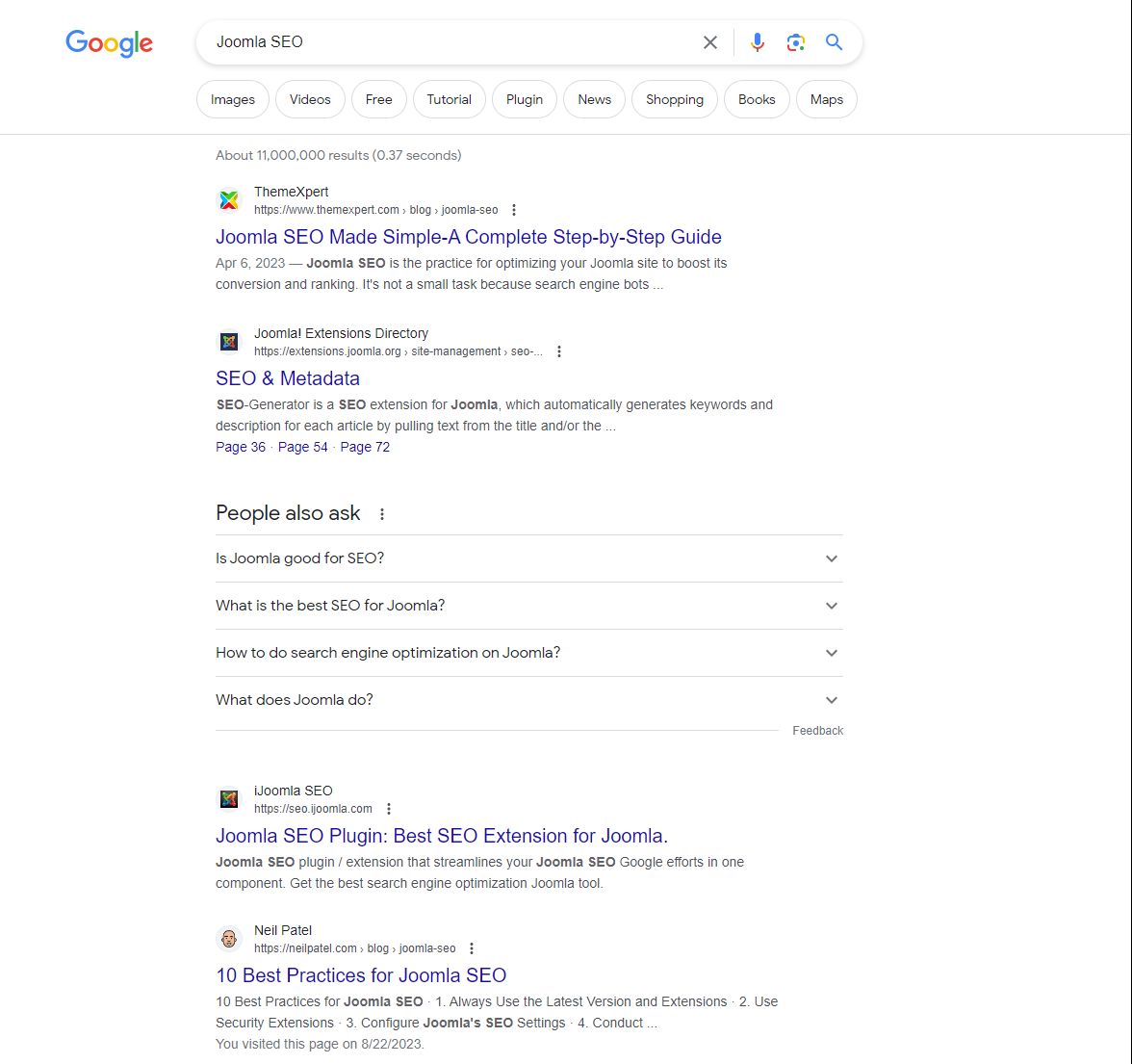
On-Page SEO
On-page SEO is considered one of the most important processes to optimize the content and code of your website so that your website can improve its ranking on the search engine results page. In addition, it is also a vital aspect of SEO, because it helps you attract more organic traffic to your website.
Page Title
If you want to create an attractive title with your targeted keywords to get your page noticed in search engines, then you should use about 60-70 characters for a page title. This will help you increase your CTR (click-through rate). And of course, the higher the CTR, the higher your search ranking will be.
To change the Page title in Joomla, there are 2 ways:
For a Menu: let’s click on the “Page Display” tab In Menu Item.
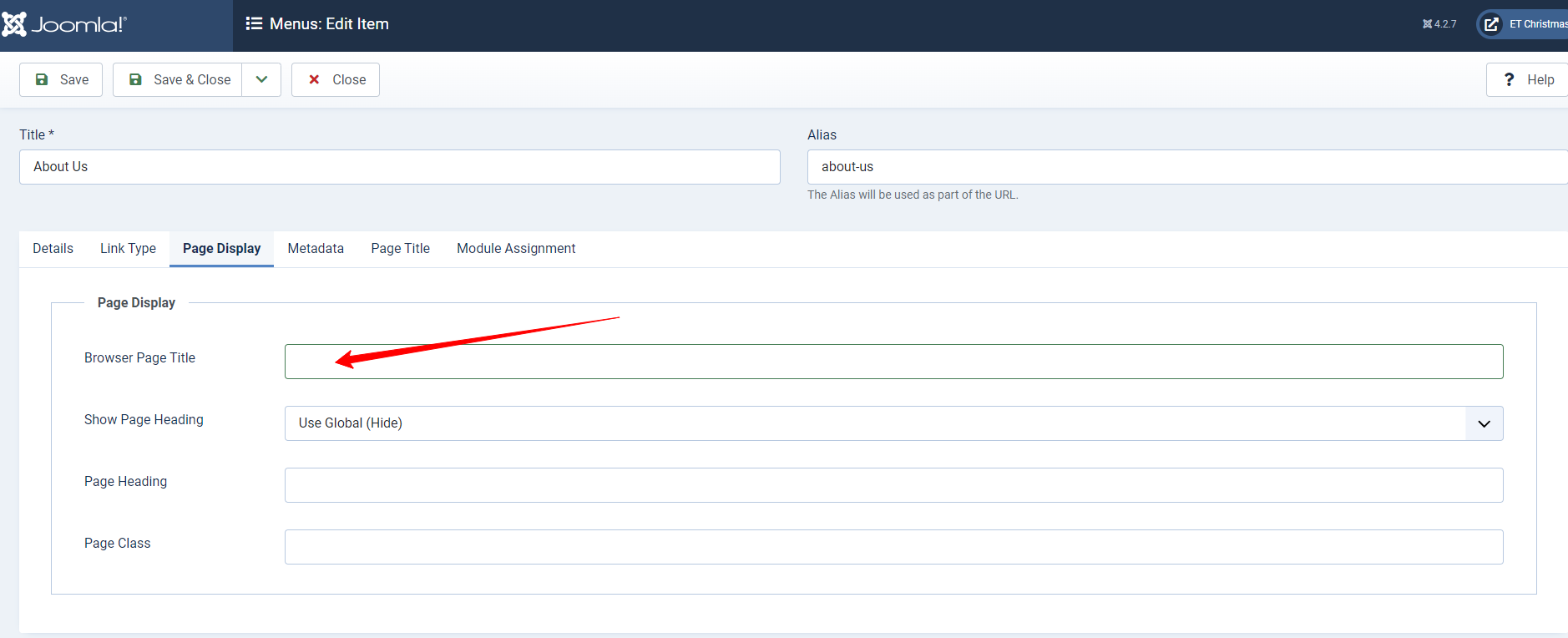
For an article: Go to Options Tabs then change the Browser Page Title at the end of screen.
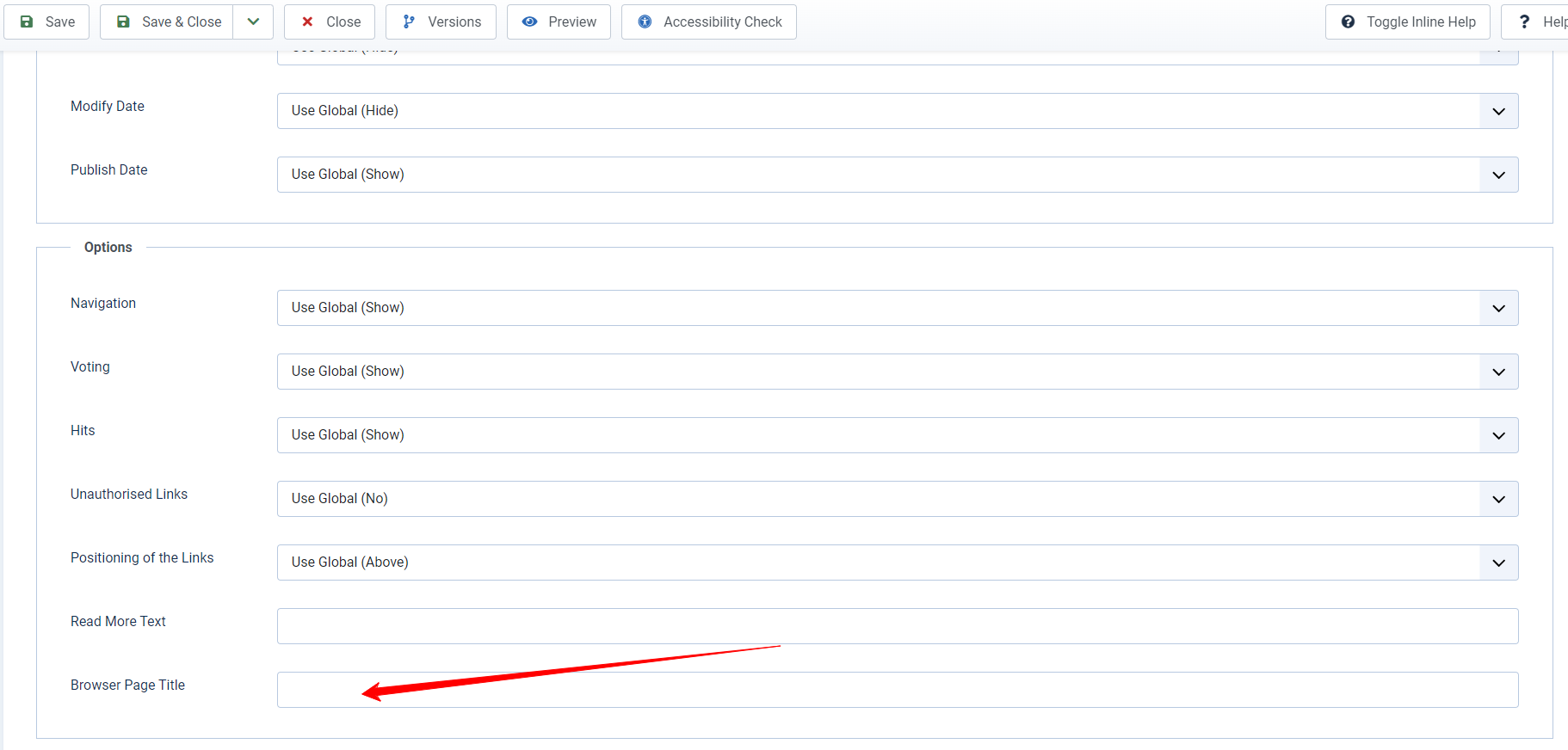
Meta Description
Similar to Page Title, you also should add your keywords in your meta description and limit it to 160 characters for a readable display. Although including keywords in your meta description is regarded as a ranking factor, the meta description will assist you in increasing your CTR effectively.
In Joomla, you can change the meta description for your Article and Menu.
For Menu, you can change the Meta Description by clicking on the Metadata tab in the Menu item.

For the Article, you will find the Meta Description field in the Metadata section under the Publishing Tab.
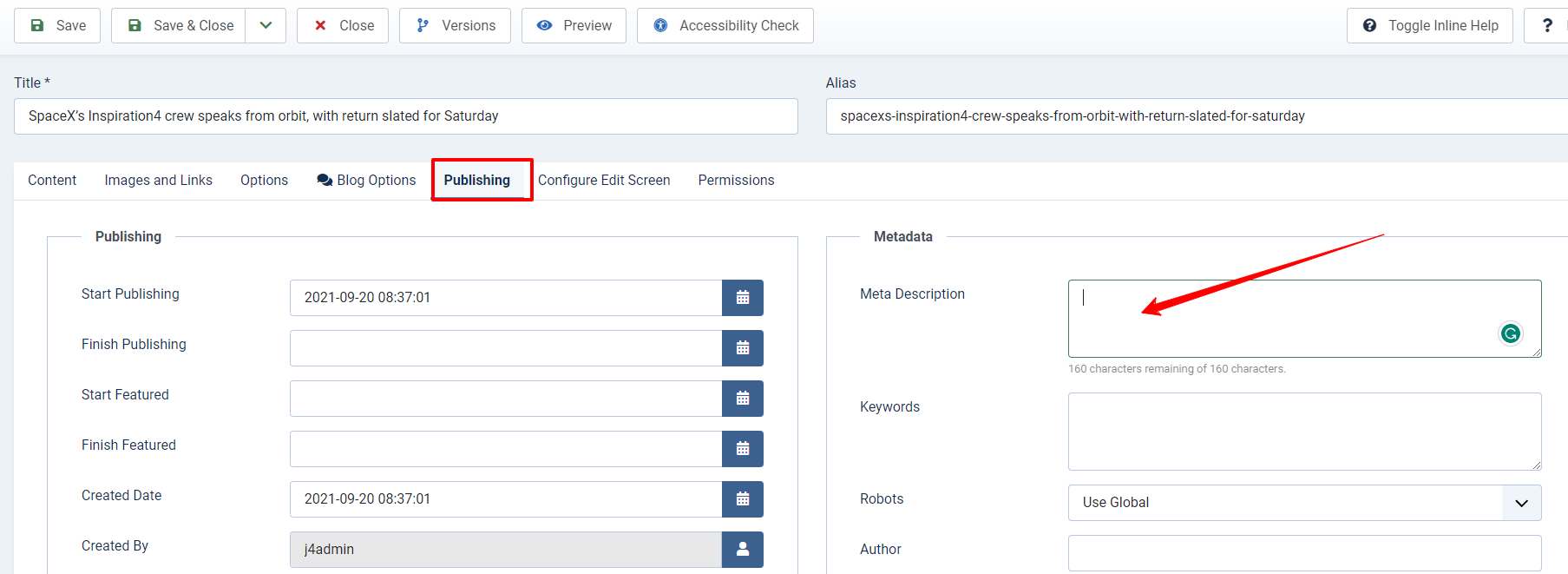
URL Optimization
Don’t let Joomla’s unfriendly URLs get you down, if you configure the right SEO settings, you’ll be good to go. You can configure your Joomla SEO settings like all that we provided above, then your URLs are optimized for both humans and search bots.
Beside basic settings, there are 2 important things you need to be assured of your URL:
- Insert keywords in your URL.
- Keep your URL short and understandable.
For example, an optimized URL for the keyword “Joomla-SEO” will look like this: www.ltheme.com/joomla-seo/.
Image Optimization
It can not be denied that adding relevant images to your content not only enriches your information and helps your readers easily understand your content but also offers extra value for SEO. If you are going to upload your image, don’t miss the following practice.
- Fill in your Image Alt Tag/ Title – Make it easier to understand for your reader. You should have your keyword in your Alt Tag/ Title but avoid keyword stuffing.
- Optimize your Image size. Nice, quality image is good, but it often comes with enormous size and results in slow load speed. This problem will directly affect your site’s UX and SEO.
If you want to reduce the size of your images significantly without losing their quality, then let’s use the assistance of the top Joomla image extension. Luckily, in the Joomla 4 version, you are able to edit, and resize an image within your back end.
Video
It is obvious that including videos is an effective method to keep your readers engaged. Because it not only makes your content more attractive than using text or images but also helps you keep users on your page for longer.
In case, you are not able to create your own video, then you can take advantage of a lot of relevant videos on YouTube platforms, TikTok, Video and embed them on your website.
Internal link
Using efficient internal links on your website is also an important factor for website navigation and content reference. Since it will provide a clear path for the search bot and help you boost your site’s ranking power. Another advantage of using internal links is that they assist you in keeping users engaged by extending new content that they might be interested in. Moreover, they help you build a strong website structure by connecting related pages together.
However, if you overuse or insert them carelessly, they can bring many bad effects on your SEO than good ones. So, how do you get the most out of internal linking? Let’s consider the following recommendations.
- Don’t try to add internal links forcefully because they make your content unnatural. You need to add the link to fit the content.
- Use relevant anchor text.
- Set a Do-follow link since a No-follow link will block search bots from crawling your website.
- Don’t insert an internal link due to the sake of numbers.
- Use Google Analytics to see how the internal links are affecting your site’s traffic and SEO.
Outbound link
On the other hand, outbound links are just for reference. Some people may worry that giving outbound links will cause your readers to wander off to other sites. However, this is only true when you set the outbound link as a Do-follow link.
To get rid of this issue, you should use No-follow links and keep them to a reasonable number. The best benefit of adding outbound links is that you can provide your readers with a solid reference for what you write.
Clear navigation on your site
Additionally, providing clear navigation on your site is extremely crucial for your website. Although you offer a stunning website and good content, your readers can’t easily find what they are looking for if you create an illogical and disorganized layout.
With Joomla, you completely make a deep site structure by using the logical Menu/Menu item system. Nevertheless, you need to take note of a few things below.
- Think ahead of your hierarchy structure
- The number of the main categories should be from 2 – 7.
Don’t try to deepen your site link structure once it’s unnecessary. Using 3 levels in depth is often enough.
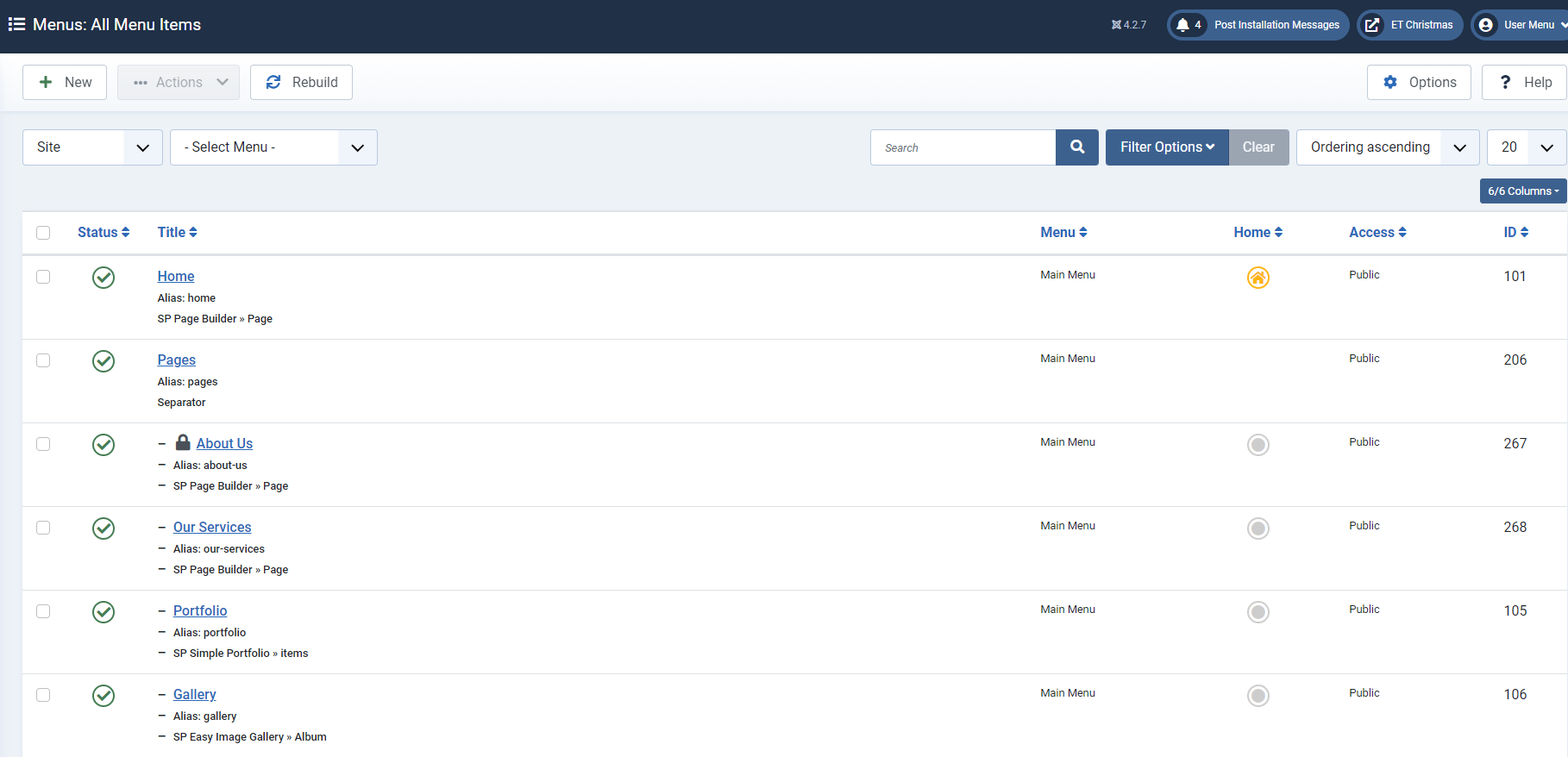
Mobile-friendly, responsive design
According to a study by Statista, more than 56% of website traffic now comes from mobile devices. This means that if your website is not mobile-friendly, you are missing out on a significant amount of potential traffic. Further, creating a responsive design can not only help you reach a wider audience but also help you improve your website’s SEO and get more traffic from search engines.
It is a reason why the ability to adapt to any mobile screen is a key factor for any website. If you are using Joomla, you can try to make the best of responsive Joomla templates or Joomla mobile extensions that will help you effortlessly create a mobile-friendly Joomla website.
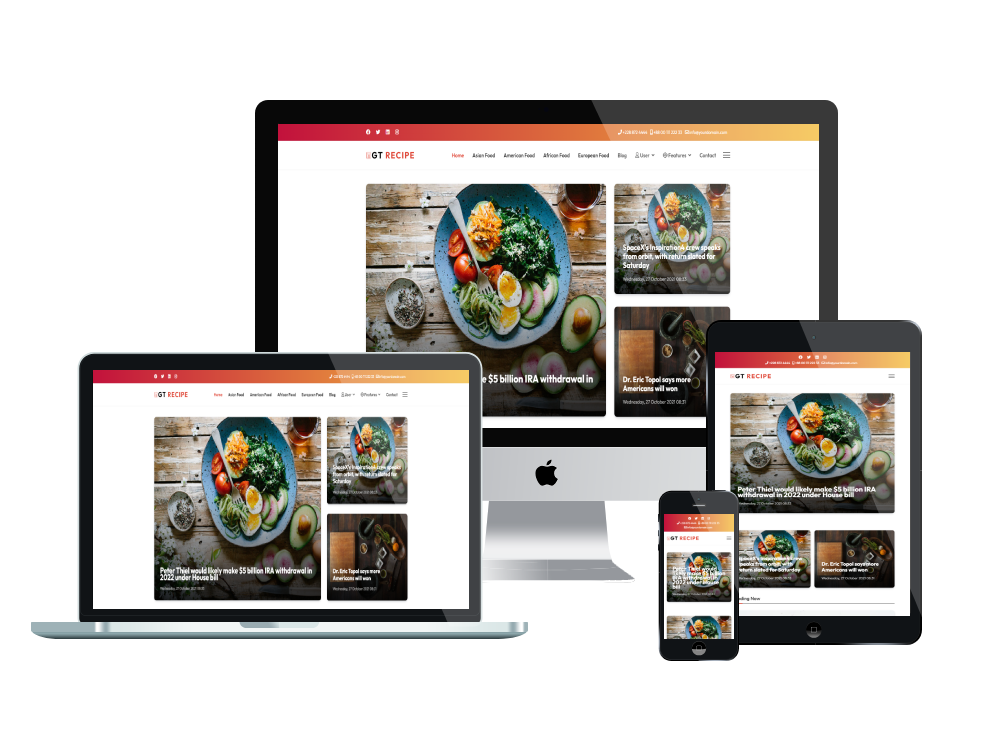
Page speed
Page loading speed is a major factor in your page ranking, and of course, nobody likes a slow website. You should spend a bit of time and effort on improving your loading speed because it affects the user experience. Once your page loads slowly, users are more likely to leave your site and move on to other results. This means that slow page speed can have a high bounce rate, which is a negative signal to search engines.
So why not take the time to get your loading speed up to speed?
In Joomla 4, you can enable Gzip Compress or speed up your website with a caching system. Moreover, there are other useful methods that support you in increasing your website loading speed:
- Choosing reliable hosting
- Using CDN
- Minimize the use of blocking JavaScript/ Render-blocking CSS
- Optimize Image Size
- Using Joomla page speed-optimized extensions
- Using AMP for your mobile device version.
Off-Page SEO
Off-page SEO is all about the activities you do on other sites to boost your search engine rankings. That includes things like building backlinks, guest blogging, and social media marketing. Optimizing Off-page SEO is important since it assists you to build trust and authority with search engines. Once you create backlinks on other sites, it signals to Google that your website is a valuable resource and should be ranked higher in search results.
Participating in community forums
In order to get a backlink or increase your brand name recognition, providing valuable information to online communities(forum, blog, social platform) is considered a remarkable way to do that.
You can consider some prevalent platforms such as Quora and Redded. However, you should follow the rules and regulations of these websites and don’t get too greedy for links since you may find your account banned.
It’s essential that your response or contribution is of real worth, otherwise, it’ll be overlooked.
Social Sharing
Currently, the majority of people tend to use social media platforms as search engines to explore products, services and information such as Facebook, Instagram, Twitter, etc. Hence, you can exploit social media platforms effectively to maximize your online presence as well as generate huge amounts of traffic.
To do that, you can share your new content or organise your content into various forms such as pictures, videos, and infographics to attract audiences’ attention. Unfortunately, social links don’t count as backlinks because they automatically come with a no-follow instruction
Guest blogging
Another way to get backlinks is guest blogging. When you provide useful content on another website and include a link back to your own website, it will create a solid source of traffic and backlinks for your website. The better the site that links to yours, the more valuable that backlink is considered to be. You
Here are a few things to keep in mind:
- Choose a website that has high domain authority because domain authority is a measure of how well-respected a website is by search engines.
- The linking website should be relevant to your own site. This means that the two websites should be about the same topic or industry.
- The backlink should be added naturally instead of forcefully.
Technical SEO
Most CMS requires technical optimization for SEO and Joomla platform is no exception. Besides content making and link building, you also need to optimize technical SEO for your Joomla website because it helps search engines understand and index your website properly.
Use SSL – Https
SSL or Secure Sockets Layer is a cutting-edge security technology that forms an encrypted connection between a web server and a browser. You can easily tell if a site has this security tech by looking for ‘https’ in the URL (not ‘http’).
Google has been giving more priority to sites that use HTTPS for a while now, and Chrome will be taking it a step further in 2018, marking any sites without HTTPS as ‘not secure’.Therefore, you should make sure your website uses HTTPS.
Besides that, it is necessary for you to distinguish the differences between 5 types of SSL certificates.
Create a Sitemap for your Joomla site
A sitemap is like a roadmap for your website. It’s an XML file that organizes all your website’s URLs into a logical hierarchy, making it easier for search engines to find and index your content more effectively. Moreover, creating a clear sitemap will help users to navigate your website more easily.
To create a sitemap in Joomla, you can use an online sitemap generator or Joomla Sitemap extensions.
Add structured data markup
Adding a structured code to your website helps search engines get a better grasp of what’s going on. If you do it right, you can show extra information that goes beyond the basics like titles, URLs, and meta descriptions. Depending on the type of structured data you use, the extra details can vary.

Consider using AMP for your site
AMP or Accelerated Mobile Pages is an open-source project that makes mobile website content load almost instantly. It eliminates all the unnecessary design code, leaving only what’s essential for the reader – text, images, and videos.
But if the majority of your traffic comes from desktop or blog readers, implementing AMP might not be worth the effort. To get it up and running on your Joomla Site, you can either hire an experienced developer or use a Joomla extension.
The duplicate content issue in Joomla
Dealing with duplicate content in Joomla can be a real headache. There are so many ways the CMS can generate it – from multiple URLs to the same page, to the same content appearing on different pages. It’s a tricky problem, but one that can be solved with a bit of know-how. Thankfully, there are some simple methods that you can take to help avoid and address the issue.
- Prevent multiple URL creation from one page.
- Add a canonical tag in Joomla, to every main content.
Conclusion
By following the simple steps outlined in this guide, you can easily optimize your Joomla website for SEO and dominate the top 1 Google rankings. With the right Joomla SEO optimization, your website can reach its full potential and attract more visitors. So, what are you waiting for? Start optimizing your Joomla website today and take your business to the next level!
Besides you can read our blog to get the differences between Joomla and WordPress – Which one is better for SEO?
- Joomla Web Hosting: A Comprehensive Guide - April 3, 2025
- How to Have a Foreground Image Using Joomla: A Step-by-Step Guide - March 30, 2025
- Can You Run E-commerce on Joomla? A Comprehensive Guide - March 30, 2025










Recent Comments